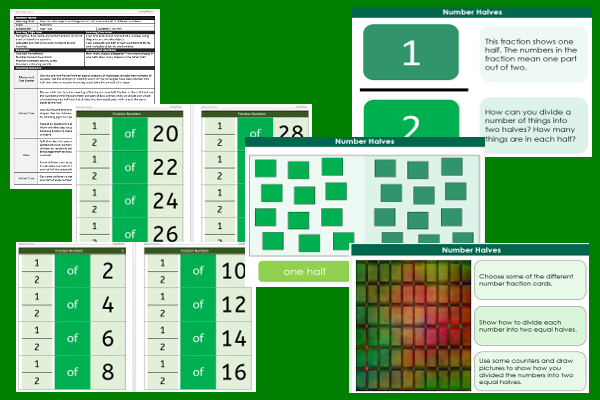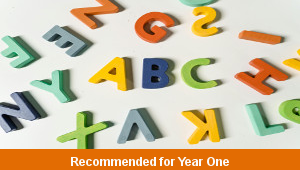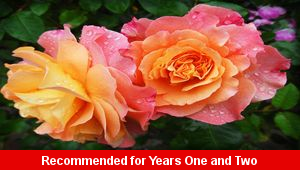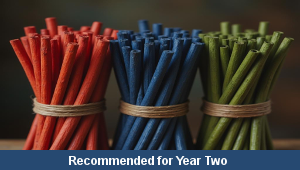Lesson Three – Number Halves

This maths teaching pack for Key Stage One gets the children to explain and model how to use concrete objects and pictorial diagrams to calculate one half of different numbers that are multiples of two and ten.
The class can illustrate and record how to divide different multiples of two to thirty and multiples of ten to one hundred into two equal halves to indicate their fraction values.
Download this teaching pack including a lesson plan, classroom activities and an interactive presentation to explain and model how to use concrete objects and pictorial diagrams to calculate one half of different numbers that are multiples of two and ten
Activities in this teaching pack include differentiated sets of cards to select and calculate one half of different multiples of two and ten for core and extension ability levels and multiples of two for support ability levels using concrete objects diagrams to model the calculations.
The interactive presentation gets the children to explore how to use concrete objects and diagrams to calculate one half of different numbers for multiples of two and ten.
This lesson is part of a maths scheme of work to get the children to identify, calculate and record how to divide different shapes, quantities and numbers to illustrate the fractions of halves and quarters. There are teaching activities for shared learning, differentiated worksheets to support independent learning and interactive presentations to introduce concepts and key skills.
-

Counting Twenty
Explore how to model and illustrate ways of counting different numbers of objects and pictures with matching sums to twenty
-

Alphabet Lists
Practise building lists of objects that have been recorded in alphabetical order to match different themes and topics
-

Garden Flowers
Develop and refine skills in representing different types of flowers grown in a garden by using a range of painting techniques
-

Equal Groups
Explore and record how to divide numbers of different groups of things into matching equal groups of two, three and four
